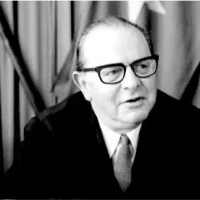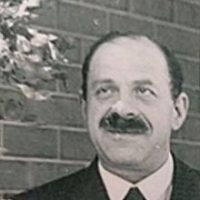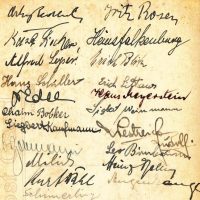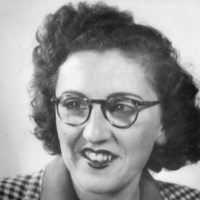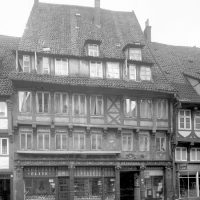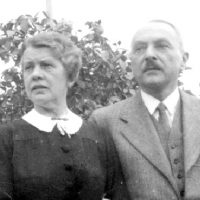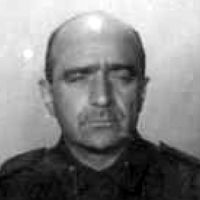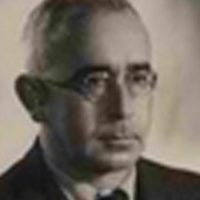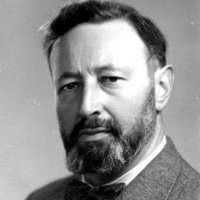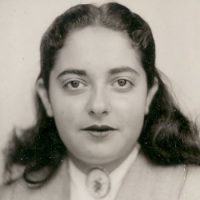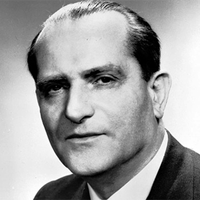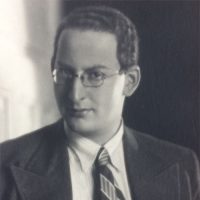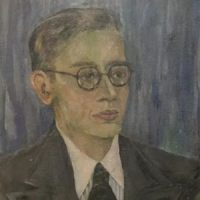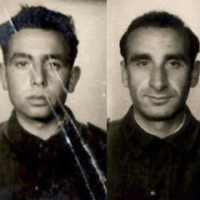While reading “Dunera Lives – A Visual History[1] Inglis, Spark u.a. „Dunera Lives. A Visual History“, Melbourne 2018, page 128.” and later while researching the Kitchener Camp and Dr. Ernst Wasser, I came across Dunera boy Dr. Hans Frankenstein by chance. He was one of around 800 Jewish pediatricians[2] Eduard Seidler, preface to the book „Jüdische Kinderärzte 1933 – 1945. Entrechtet – geflohen -ermordet“ online, Freiburg 2014. Retrieved April 23, 2023. who were first deprived of their profession and the livelihood of their families by the fascists and then expelled from their homeland or murdered. The article expands the short entry[3] Entry for Dr. Frankenstein in the DGKJ-database (German), retrieved April 22, 2023. for Dr. Hans Frankenstein in the database “Jewish paediatricians 1933-1945. Deprived of their rights – fled – murdered” of the German Society for Paediatrics and Adolescent Medicine (DGKJ) with the results of our own research, documents from Australia and documents provided by websites for family research.
Peter Dehn, January 2024.
From Görlitz via Australia to Israel
Sigismund and Caecilie Frankenstein[4] Marriage license from Feb 16, 1899, registry office Jauer (East Prussia). married in February 1899 in Jauer (today: Jawor, Poland). Their son Hans[5] Birth, wife, capture in the UK and dates of stay in Australia taken from the entry documents für Australia. National Archive of Australia (NAA), N_ItemNumber8617176). was born on December 7, 1899 in Allenstein/East Prussia (today: Olsztyn, Poland). He married Charlotte Langner (born on October 1, 1899 in Breslau). On June 15, 1928 his son Ludwig and on August 14, 1931 his daughter Hanna were born in Görlitz[6] Cf. Application for Naturalization in Palestine, Dec 19, 1945..
In 1924, Dr. Frankenstein was granted his license to practice medicine in Breslau. “From 1925/26 to 1932/33 (he is) listed in the Görlitz address books as a pediatrician[7] Biography DGKJ, loc.cit.. in private practice.” The “Reichs Medizinal Kalender[8] MK 1933, page 140.” (RMK) gives his address as Blumenstraße 2 in 1933. The RMK notes his specialist qualification as a pediatrician as well as his leading position at the St. Carolus Hospital in Görlitz. From the beginning of 1934, he was banned from billing his medical services to the health insurances because of his Jewish origin.

The Nazis thus made it impossible for Jewish doctors of all specialties to run their own practice in an economically viable manner: This also happened to his colleagues in Görlitz, Bertold Krebs[9] DGKJ-Entry Dr Krebs, retrieved May 10, 2023. and Arnold Malinowski[10] DGKJ-entry Dr Malinowski, retrieved May 10, 2023.. Now the easternmost town in Germany has only two instead of five pediatricians. In Görlitz, the Nazis also forced Erich Oppenheimer (dermatologist) and the general practitioners Rudolph Nürnberger (Görlitz town) and Martin Schwarz (from Penzig, district of Görlitz) out of the profession[11] R. Otto, „Vertreibung jüdischer Ärzte aus Görlitz“ (Expulsion of Jewish doctors from Görlitz) in Ärzteblatt Sachsen 4/2005 page 173f mentions Dr Krebs and Dr Malinowski and other names of persecuted Jewish doctors from Görlitz.. Dr Albert Blau[12] Cf. R.Otto loc.cit., head physician of the St. Carolus Hospital,[13] Wikipedia about the hospital, abgerufen am 25. 4.2023. founded and run by a Catholic order in 1927, lost his livelihood due to racist Nazi persecution.
Expulsion from Görlitz
In a list of Jewish businessmen[14] „Jüdisches Leben vor 1933“ (Jewish life bevor 1933) in Görlitz; Zeitsprünge project, retrieved May 5, 2023. in Görlitz in 1935, Dr. Frankenstein was no longer listed. Several editions of the yearbook “The Medical Directory[15] TMD 1940 page 1968 and 1942 page 2018.” (TMD) noted the addition “M.D.U. Genoa, 1933” in the “Qualifications” column. The family could therefore have gone to Italy early on; Hans Frankenstein may have practiced there or studied again to meet Italian requirements. The 1939 edition of “The Medical Register[16] TMR 1939 page 1826; 1941 page 2915; 1942 page 1969, 1943 page 2025.” (TMR) also listed Dr. Hans Frankenstein in Genoa from August 29, 1938. Both directories gave the address Via Galata 33/11.

It is not known exactly when Dr. Frankenstein left Italy. It can probably be assumed that the second flight from persecution and the renewed separation from the family was triggered by the introduction of anti-Semitic laws[17] Italy introduced a series of racist laws from September 1938. From the end of 1943, Jews were arrested and most of them deported to Auschwitz. See Wikipedia (German) on the Italian racial laws. in Italy, which began in September 1938. Among other things, these laws made it possible to expel foreign Jews and revoke citizenships that had been granted to immigrant Jews from 1919. It is not known when and by which route he arrived in England. His family was unable to accompany him: In an Australian questionnaire at the end of 1940, he named his wife Charlotte as his next of kin and her new Genoa address[18] Cf. National Archiv of Australia, NAA_ItemNumber8617176. at Via Cesare Cabella 22B. At least at that time, she was living in Genoa with the children.
Persecuted as a Jew, deported as an “enemy alien”
Kitchener Camp[19] Cf. Clare Ungerson „Four Thousand Lives“, Cheltenham 2019, pages 53ff. was opened in England at the beginning of 1939 in response to Kristallnacht. It was actually intended as a transit camp for refugees who had or were expecting entry papers and other documents for third countries. The utilization of the previously unused military site and the operation of the camp were financed entirely from donations.
It is not known when Dr. Frankenstein and his family parted ways. He arrived in England on June 5, 1939[20] Index card from World Jewish Relief, Mail tot he author of July 3, 2023.. An index card from the British Home Office bears the date December 12, 1939[21] Copy of index card, Kitchener Camp Website, retrieved May 2, 2023.. His name does not appear on an occupancy list for Kitchener Camp that was drawn up somewhat earlier. The index card gave 44 Wingate Road as his address in Liverpool at the time, but the doctor was unable to find work there. He had no wish to be repatriated, was noted in a bureaucratically laconic (and hardly surprising) manner. As a result of the questioning, the British domestic intelligence service MI5 stated: “Not to be interned[22] Ibid.“. This corresponds to the classification of refugees from Germany, Austria and Czechoslovakia in category “C” as friendly foreigners from “enemy states”.
Six months later, this official statement was no longer worth anything to him, as it was to thousands of other refugees. According to his statement, Hans Frankenstein was interned in Kitchener Camp on June 27, 1940[23] Cf. NAA_ItemNumber8617176.. The release on July 10, 1940 noted on a second index card must be regarded as nasty bureaucratic sarcasm[24] Index Card for internees in the UK.. Although this date marked the end of the stay in the camp, it in no way marked the end of the internment.

To Australia on Dunera
Dr. Frankenstein and around 250 inmates of the camp were taken directly from Kitchener Camp to the HMT Dunera, which sailed from Liverpool on July 10, 1940. The passenger ship, hired by the British Navy for troop transports, was licensed for 1,167 people in military service. Now it was not only used as a prison ship for more than 2,000 refugees from various British camps. Also brought on board were 250 Germans (including several Nazis) and 200 Italians – all survivors of the internment ship Arandora Star, which was sunk by a German submarine on July 2. The Dunera was therefore already hopelessly (and illegally) overcrowded – without counting the 300 guards and the ship’s crew. During the 57-day journey to Australia, the internees were locked behind barbed wire. Guards became abusive; there were mass thefts of property, the destruction of important documents belonging to the internees and anti-Semitic riots. The sanitary conditions on board were catastrophic and far from hygienic due to the more than double overcrowding.
On September 6, 1940, the Dunera passed under the Sydney Harbour Bridge and docked at Jones Wharf. The internees were immediately taken by train to Camp 7 near Hay (state of New South Wales), where they were imprisoned behind barbed wire. There, as in other Australian camps, the internees were left to manage their own daily camp life. Dr. Frankenstein represented his comrades from Kitchener Camp on the Camp Council of Camp 7. He was elected deputy chairman by the plenum of the camp parliament[25] Inglis, Spark loc.cit., page 218.. In mid-1941, Dr. Frankenstein was briefly sent to the Orange internment camp (New South Wales). He and all the Hay internees were then sent to a camp near Tatura[26] Docket for internees in Australia, NAA_ItemNumber9905995. (Victoria).
End of internment, settlement in Palestine
Following fierce public and parliamentary criticism of the deportations of Nazi opponents and the events on the Dunera, the British government began to withdraw internments on a case-by-case basis in mid-1941. By mid-1943, more than 1,100 men were released and taken by sea to England to serve the war effort in pioneer units or in other ways.
At least 500 men wanted to stay in Australia. They were allowed to “volunteer[27] Cf. Briefing from the General-Adjudanten to the Australian parliament from March 29, 1946, NAA_ItemNumber4938132, sheet 28, point d” for an army labour unit from the beginning of 1942. Dr. Frankenstein apparently did not want this. According to the official Australian documents, his internment did not end until August 9, 1943, by which time most of his campmates had already been serving in the 8th Employment Company for more than a year. Unlike other fellow internees, Hans Frankenstein was not released “to England”, but explicitly “to overseas[28] Cf. NAA_ItemNumber8617176.“.
Together with 17 other Dunera Boys, he embarked on his journey to Palestine[29] Cf. NAA_ItemNumber216020. on the SS Waipawa in August 1943. After years of separation, Hans Frankenstein, his wife Charlotte and their children Ludwig and Hanna are finally reunited in Palestine. They now lived in Raanana, a suburb of Tel Aviv.
Nothing is known about his first time in Palestine. The next piece of information dates from the end of 1945. The family applied for naturalization in Palestine on 19 December 1945. Dr. Burstein and Mosche Monaschewitz acted as guarantors. The fact that both guarantors stated that they worked at “Kupat Cholim” indicates that Dr Frankenstein had made contact with Jewish medical institutions[30] Kupat Cholim was founded in 1933 for the Palestinian healthcare system. Today, the successor organization Leumit, operates 320 medical centers, 150 pharmacies and laboratories in Israel and has 720,000 beneficiaries. in order to work in his profession again.
Dr. Hans Frankenstein[31] Email from Lauren Leiderman, Stolperstein Initiative Görlitz, dated November 8, 2025. died on February 25, 1983, in Haifa; Charlotte died on March 15, 1987, also in Haifa.

Footnotes
show
- [1]↑Inglis, Spark u.a. „Dunera Lives. A Visual History“, Melbourne 2018, page 128.
- [2]↑Eduard Seidler, preface to the book „Jüdische Kinderärzte 1933 – 1945. Entrechtet – geflohen -ermordet“ online, Freiburg 2014. Retrieved April 23, 2023.
- [3]↑Entry for Dr. Frankenstein in the DGKJ-database (German), retrieved April 22, 2023.
- [4]↑Marriage license from Feb 16, 1899, registry office Jauer (East Prussia).
- [5]↑Birth, wife, capture in the UK and dates of stay in Australia taken from the entry documents für Australia. National Archive of Australia (NAA), N_ItemNumber8617176).
- [6]↑Cf. Application for Naturalization in Palestine, Dec 19, 1945.
- [7]↑Biography DGKJ, loc.cit..
- [8]↑MK 1933, page 140.
- [9]↑DGKJ-Entry Dr Krebs, retrieved May 10, 2023.
- [10]↑DGKJ-entry Dr Malinowski, retrieved May 10, 2023.
- [11]↑R. Otto, „Vertreibung jüdischer Ärzte aus Görlitz“ (Expulsion of Jewish doctors from Görlitz) in Ärzteblatt Sachsen 4/2005 page 173f mentions Dr Krebs and Dr Malinowski and other names of persecuted Jewish doctors from Görlitz.
- [12]↑Cf. R.Otto loc.cit.
- [13]↑Wikipedia about the hospital, abgerufen am 25. 4.2023.
- [14]↑„Jüdisches Leben vor 1933“ (Jewish life bevor 1933) in Görlitz; Zeitsprünge project, retrieved May 5, 2023.
- [15]↑TMD 1940 page 1968 and 1942 page 2018.
- [16]↑TMR 1939 page 1826; 1941 page 2915; 1942 page 1969, 1943 page 2025.
- [17]↑Italy introduced a series of racist laws from September 1938. From the end of 1943, Jews were arrested and most of them deported to Auschwitz. See Wikipedia (German) on the Italian racial laws.
- [18]↑Cf. National Archiv of Australia, NAA_ItemNumber8617176.
- [19]↑Cf. Clare Ungerson „Four Thousand Lives“, Cheltenham 2019, pages 53ff.
- [20]↑Index card from World Jewish Relief, Mail tot he author of July 3, 2023.
- [21]↑Copy of index card, Kitchener Camp Website, retrieved May 2, 2023.
- [22]↑Ibid.
- [23]↑Cf. NAA_ItemNumber8617176.
- [24]↑Index Card for internees in the UK.
- [25]↑Inglis, Spark loc.cit., page 218.
- [26]↑Docket for internees in Australia, NAA_ItemNumber9905995.
- [27]↑Cf. Briefing from the General-Adjudanten to the Australian parliament from March 29, 1946, NAA_ItemNumber4938132, sheet 28, point d
- [28]↑Cf. NAA_ItemNumber8617176.
- [29]↑Cf. NAA_ItemNumber216020.
- [30]↑Kupat Cholim was founded in 1933 for the Palestinian healthcare system. Today, the successor organization Leumit, operates 320 medical centers, 150 pharmacies and laboratories in Israel and has 720,000 beneficiaries.
- [31]↑Email from Lauren Leiderman, Stolperstein Initiative Görlitz, dated November 8, 2025.
